18 Watch Hand Types Every Enthusiast Should Know
For watch enthusiasts, one of the most distinctive features of a timepiece is the design of its hands. The hands on a watch dial reveals a lot about the overall style, era, and intended functionality of the timepiece.
In this ultimate guide, we’ll explore the rich diversity of watch hand types, from the traditional styles seen on classic dress watches to the bold, futuristic designs of modern sports watches. Whether you’re a watch collector looking to identify different hand types or a novice hoping to learn the terminology, this guide covers it all.
We’ll go through the major categories of hands, the history behind them, and what makes each type unique. From poised baton hands to muscular Mercedes hands and everything in between, let’s dive into the nuances of watch hand design and how the right hands can enhance readability and reflect the character of a watch. Stacked with photos and overviews of popular hand types, this guide is an invaluable reference for understanding the impressive range of watch hands.
Contents
- 1. Alpha Hands
- 2. Arrow Hands
- 3. Baton Hands
- 4. Breguet Hands
- 5. Cathedral Hands
- 6. Dauphine Hands
- 7. Feuille or Leaf Hands
- 8. Fleur De Lys Hands
- 9. Lozenge Hands
- 10. Mercedes Hands
- 11. Obelisque Hands
- 12. Pencil Hands
- 13. Plongeur Hands
- 14. Snowflake Hands
- 15. Skeleton Hands
- 16. Sword Hands
- 17. Spade Hands
- 18. Syringe Hands
1. Alpha Hands
Alpha hands are a classic style of watch hands that have been around for over a century. They are thin and pointed, with a simple and elegant design that adds a touch of sophistication to dress watches. The shape of alpha hands is similar to that of the letters “A” or “V,” with a pointed tip and a wide base that tapers towards the center.
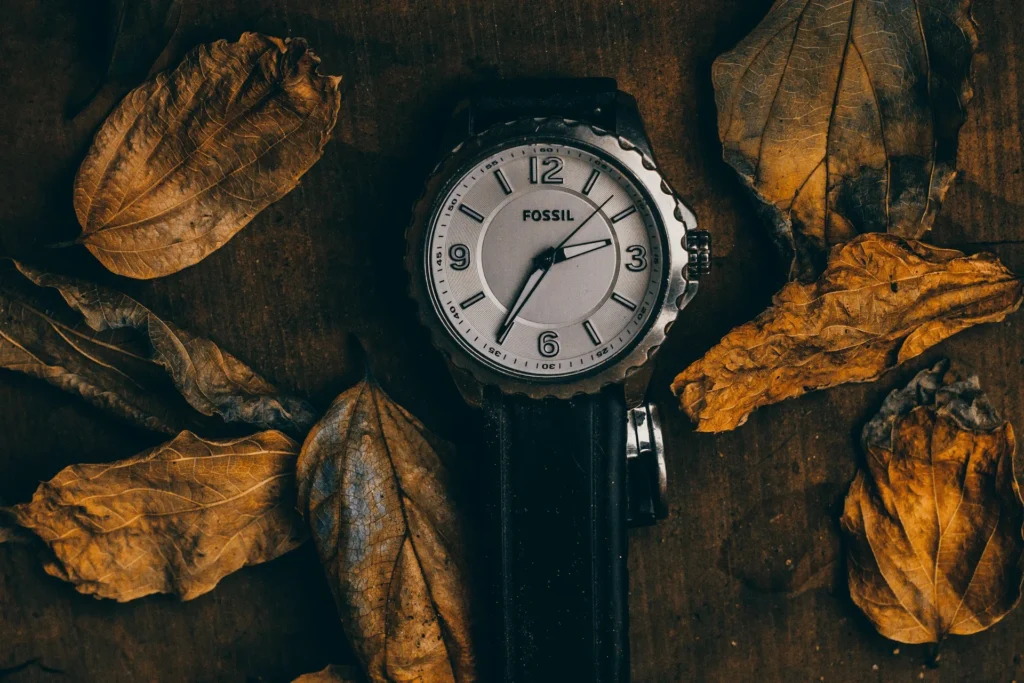
Alpha hands are designed to be unobtrusive, allowing the watch face to remain the focus of attention. They are commonly found in dress watches, where the emphasis is on simplicity and elegance. The slender design makes them easy to read accurately, and their narrow shape reduces air resistance, allowing for smooth and precise movement.
2. Arrow Hands
Arrow hands are a bold and distinctive style of watch hands that feature a unique arrowhead design on the tip of the hour and minute hands. Their wide and robust design makes them easy to read, even in low-light conditions.
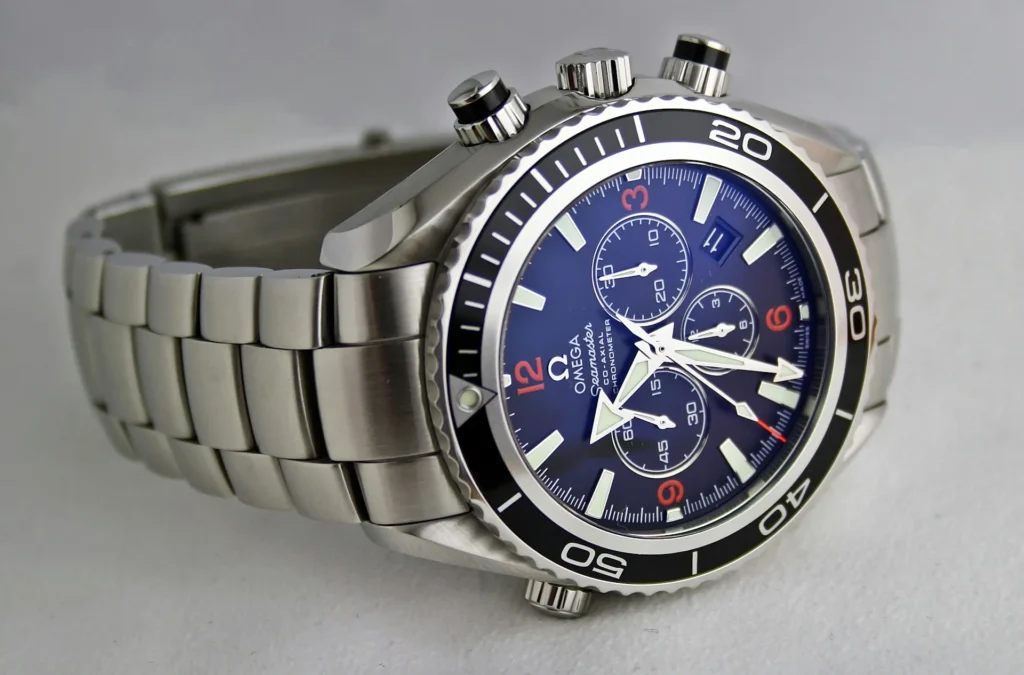
Arrow hands are commonly found in sports, aviation, and military-inspired watches, where precision and accuracy are essential. They are typically paired with large and bold hour markers, adding to the watch’s overall visibility and readability.
3. Baton Hands
Baton hands, as the name suggests, are long, straight, and rectangular in shape – similar to a baton or stick. They have a thin and sleek profile, and the tip of the baton hand can be either rounded or squared off, depending on the watch design.
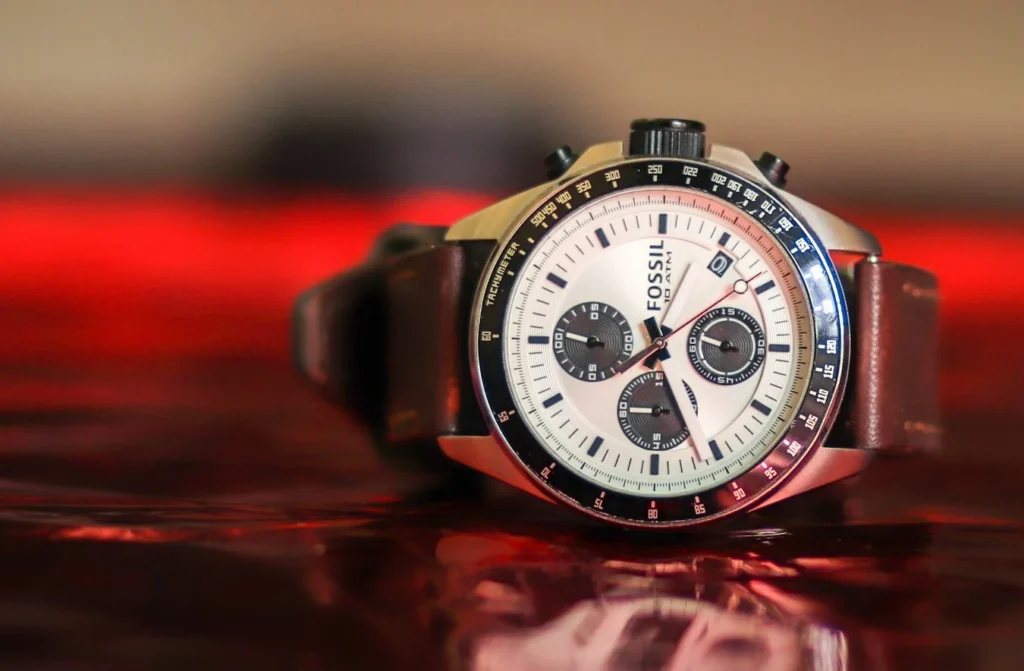
Baton hands are a minimalist option for watchmakers who want to create a timepiece that focuses on clean lines and simplicity. Their unobtrusive design is ideal for dress watches, where the emphasis is on elegance and sophistication. Baton hands are also a popular choice for modern watches, where the sleek and contemporary design adds a touch of sophistication to the timepiece. They are typically paired with simple hour markers, such as dots or lines.
4. Breguet Hands
Breguet hands, also known as Pomme hands, are a style of watch hands characterized by their unique design and history. They are typically made with a hollow, moon-shaped tip and a tapered profile that widens as it approaches the center of the watch face.
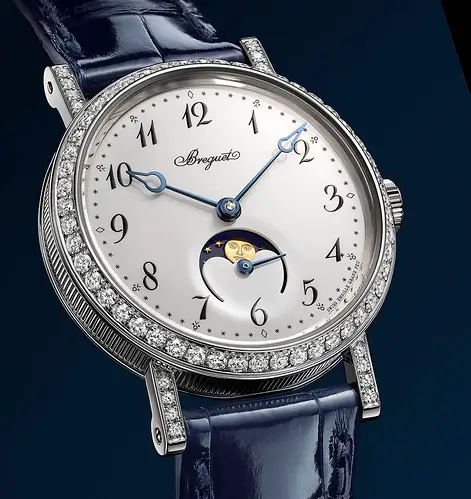
Breguet hands were invented by Abraham-Louis Breguet, a famous Swiss watchmaker who lived in the late 18th and early 19th centuries. The company Breguet still bears his name and uses his famous hand design on luxury timepieces that honor the brand’s heritage.
Watchmakers today reserve Breguet hands for high-end dress watches and vintage-inspired pieces, showcasing the style’s sophistication. The unique half-moon tip and hollowed-out circle add a delicate touch of class to the watch dial without overpowering it. Breguet hands are often paired with Roman or Arabic numerals, creating a traditional and classic look.
5. Cathedral Hands
Cathedral hands are characterized by their ornate and intricate design. They are typically long and narrow with pointed tips that resemble the spires of a cathedral. The base of the hand is wider and tapers as it reaches the tip, creating a unique and eye-catching look.
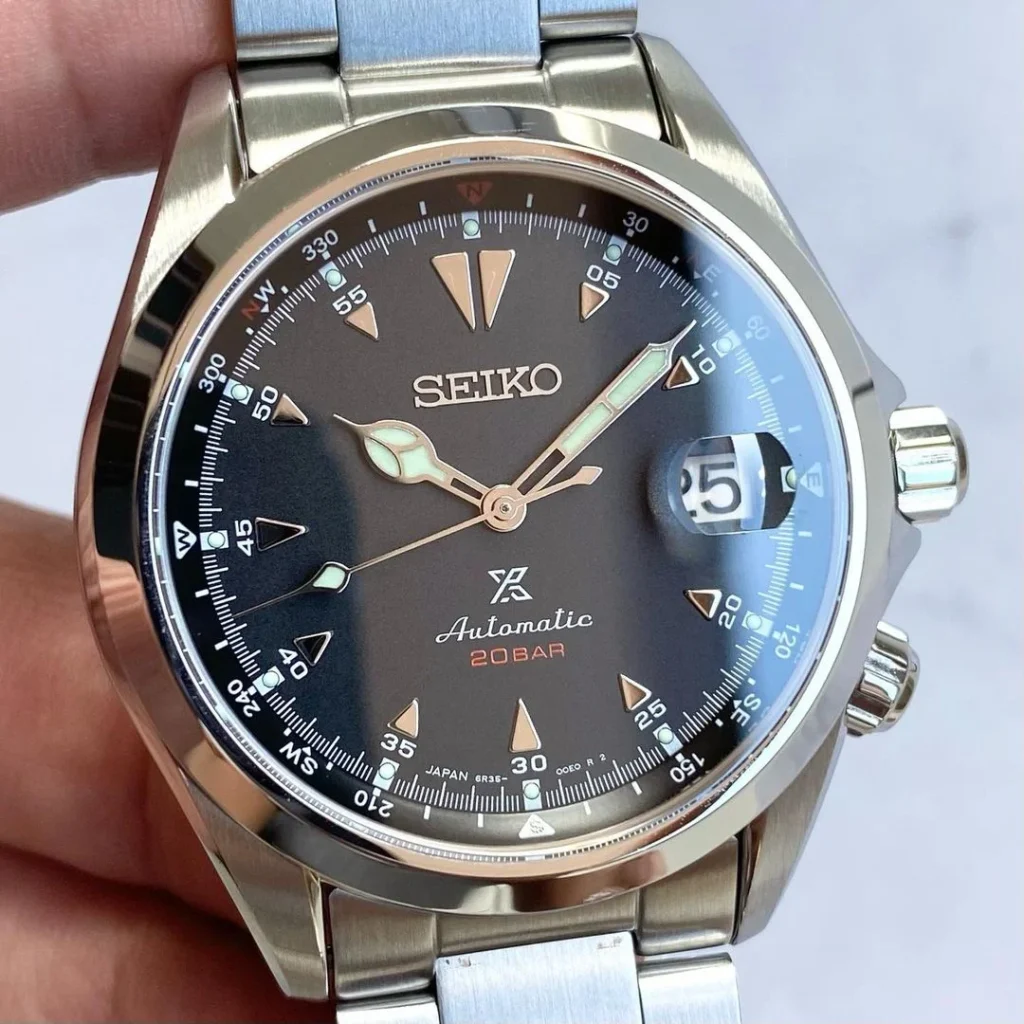
Cathedral hands are found on high-end dress watches and vintage-style pieces. They are often paired with Roman or Arabic numerals, further emphasizing the classic aesthetic of the watch.
While cathedral hands are undoubtedly beautiful, their design can sometimes make them difficult to read. The narrow and pointed tips can obscure the hour markers, making it challenging to tell the time accurately. However, many watch enthusiasts appreciate the ornate and elaborate design of cathedral hands and consider them to be a work of art in their own right.
6. Dauphine Hands
Dauphine hands are known for their simple and elegant design. They are named after the Dauphin of France, who was the heir apparent to the French throne in the 18th century. The hands are typically straight and slender, with a tapered profile that widens towards the base of the hand.
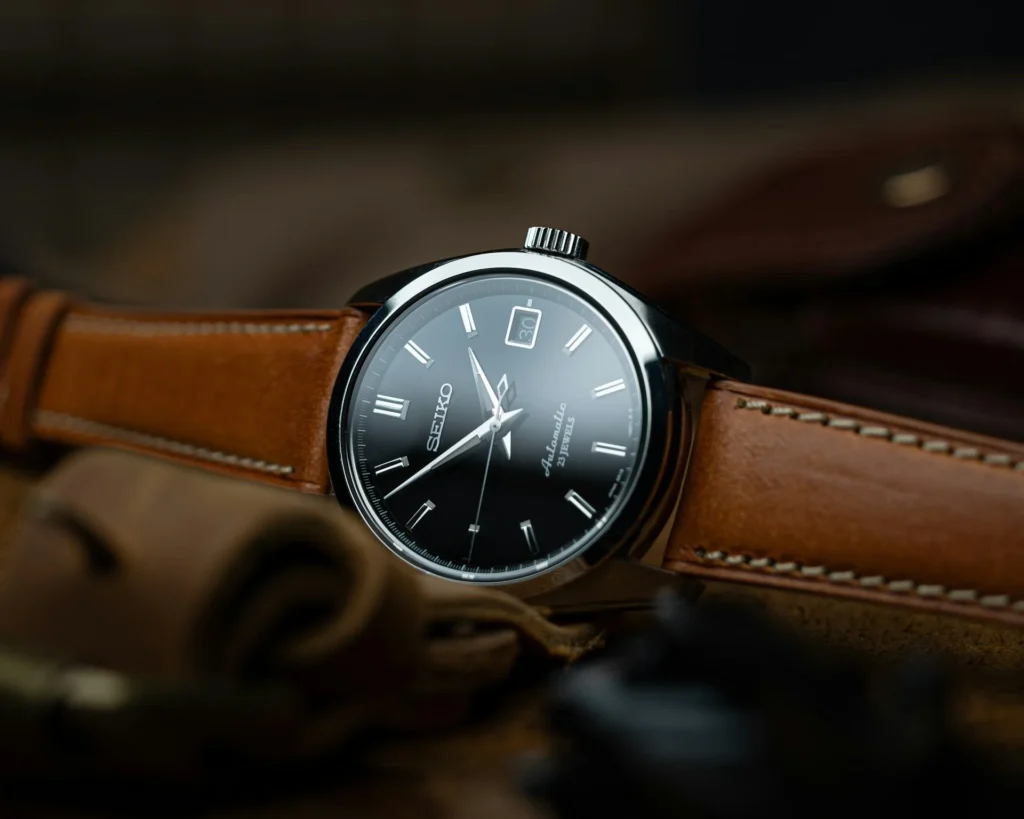
Dauphine hands are a popular choice for dress watches and are often used in high-end timepieces. Their minimalist design adds a touch of sophistication to any watch, while their simple lines make them easy to read. Dauphine hands are often paired with thin and unobtrusive hour markers, creating a sleek and understated look.
7. Feuille or Leaf Hands
Feuille hands, French for “leaf hands”, have a distinctive shape reminiscent of a leaf or fern frond. Their slender, elongated design features an oval center that tapers outwards to a point, like a leaf extending from its stem.
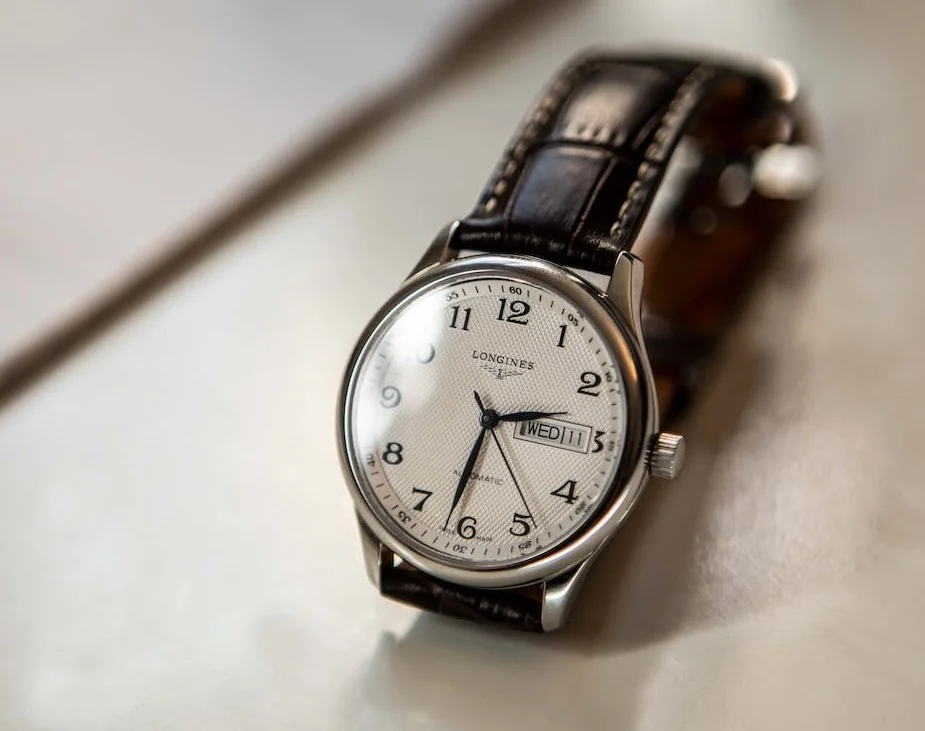
Feuille hands were popularized in the Art Deco era of the 1920s and 30s when geometric, nature-inspired motifs were prevalent. Today, they lend an elegant, botanical look to both vintage and contemporary watches. Luxury brands like Vacheron Constantin, Longines and Cartier use feuille hands-on delicate dress watches, often paired with textured dials and Roman or Arabic numerals.
8. Fleur De Lys Hands
Fleur de lys hands display an ornate, floral motif inspired by the symbolic fleur de lys emblem. The distinctive lily shape features a central stalk dividing into two curling petals or leaves at the tip.
Brands like Czapek often use fleur-de-lys hands for its high-end timepieces that pay tribute to fine French watchmaking. The graceful contours and expressive shape make fleur-de-lys hands a sophisticated alternative to plain hands, evoking heritage and craftsmanship.
However, their elaborate design requires precision manufacturing and can obstruct dial visibility if overly stylistic. When balanced well, fleur de Lys hands infuse watches with a delicate grandeur. Their floral motif symbolizes refinement and humanistic attention to detail.
9. Lozenge Hands
Lozenge hands get their name from their distinctive diamond shape resembling the form of a lozenge. Also known as diamond hands, they feature a four-sided elongated rhombus design typically paired with a matching minute hand.
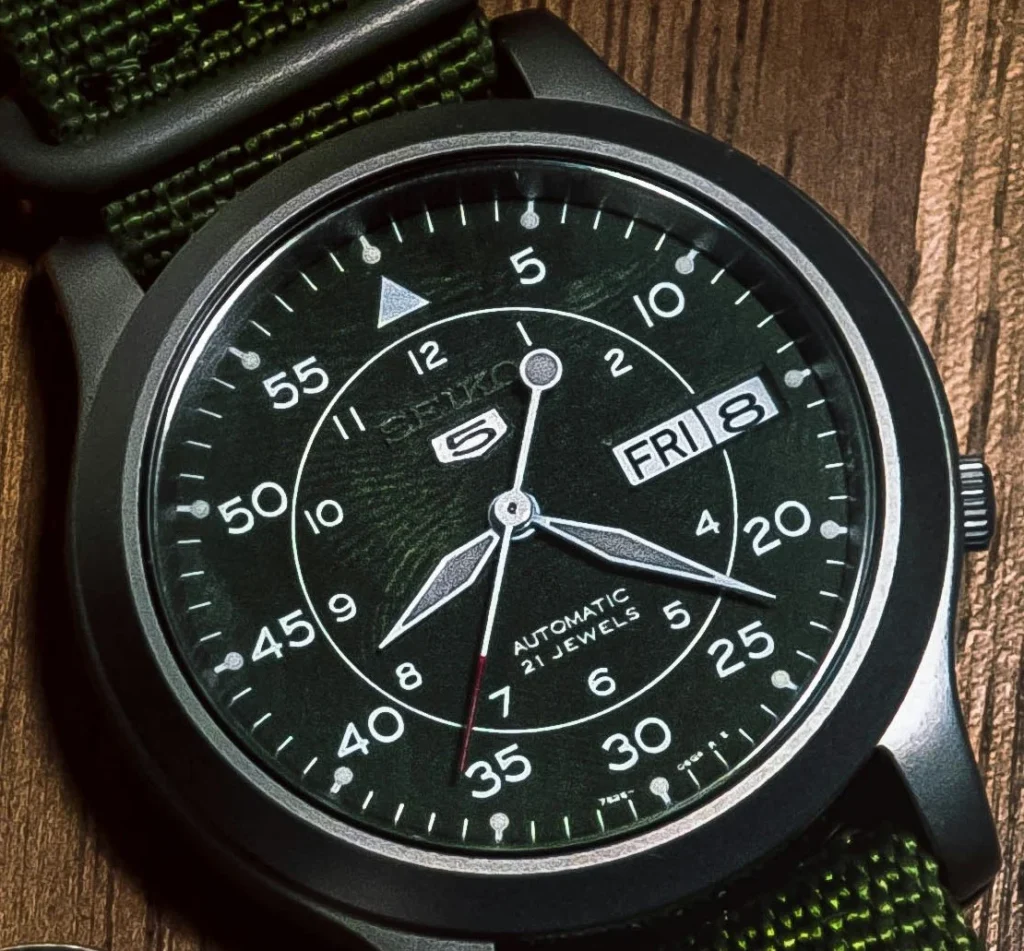
10. Mercedes Hands
Mercedes hands are one of the most distinctive and recognizable hand styles found Son tool watches and racing chronographs. But despite their enduring popularity, the origins of their name and design are shrouded in some mystery.
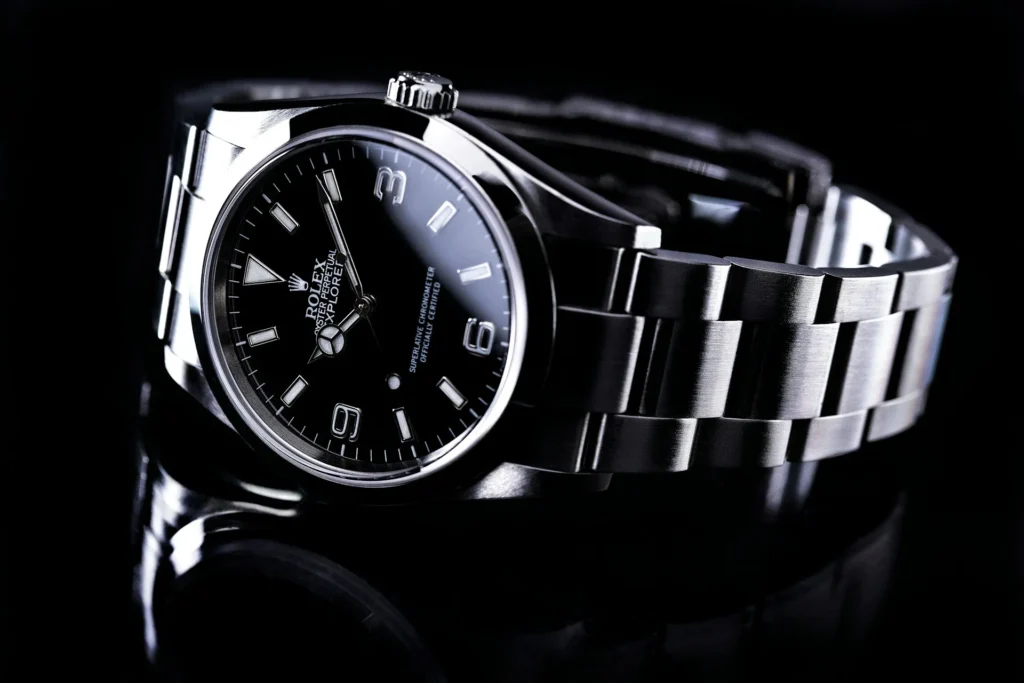
The Mercedes name actually has nothing to do with the car brand. It gained prominence in the 1920s after Mercedes Gleitz, a swimmer, wore a Rolex watch across the English Channel. The watch had a new style of hands with a large circle bisected by three lines.
This bold design was likely inspired by the need for legibility. The lines helped divide up the large lume plot for easier application. Though Rolex didn’t invent the Mercedes hands, it did help popularize them on models like the Explorer and GMT-Master. The highly legible, high-contrast design was perfectly suited for aviation and motorsports. Now, Mercedes’s hands are synonymous with vintage sports watches and modern racing chronographs. Brands like Breitling and TAG Heuer use them on automotive-themed watches.
The Mercedes hands’ commanding, masculine presence continues to be favored today. Their retro-chic style provides instant wrist presence while paying homage to early 20th-century tool watch design.
11. Obelisque Hands
Obelisque hands have a narrow, rectangular shape that tapers towards a pointed tip, which resembles an obelisk – a four-sided tall, narrow tapering monument.
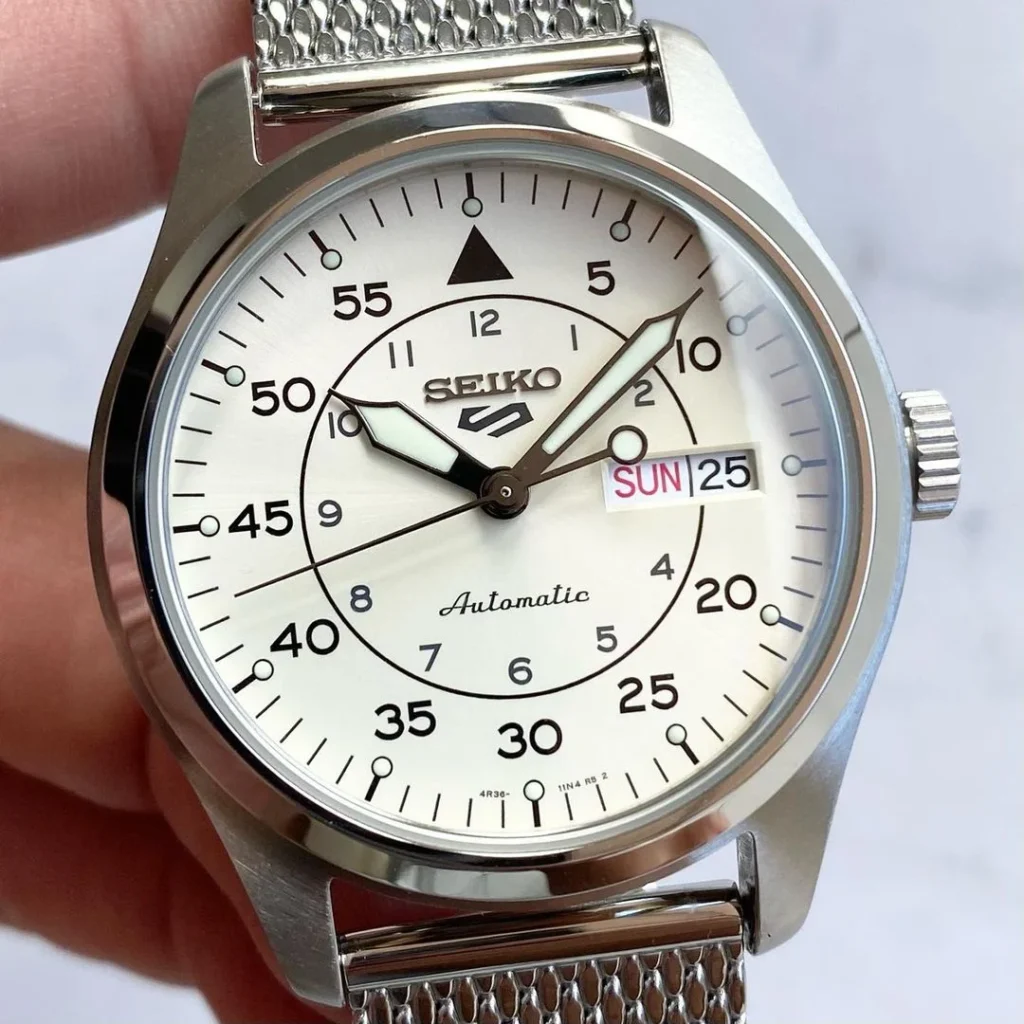
Mostly paired with Arabic or Roman numeral hour markers to create a refined and understated look. The design of obelisque hands is minimalist, which makes them a popular choice for dress watches and vintage-inspired timepieces.
12. Pencil Hands
Pencil hands are known for their simple and slender design. They have a long and narrow shape, resembling the tip of a pencil, with a pointed tip and a straight shaft. Pencil hands are often paired with small and minimalist hour markers to create a clean and uncluttered look.
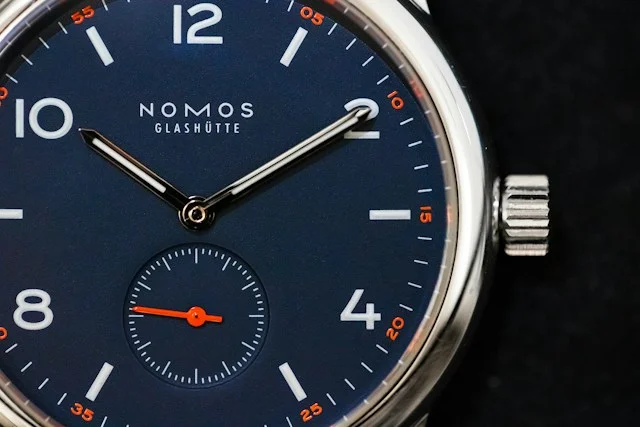
Pencil hands are commonly used in dress watches and are a popular choice for those seeking a refined and elegant look. They are also commonly used in women’s watches due to their delicate and feminine appearance.
13. Plongeur Hands
Plongeur hands, also known as diving hands, are designed specifically for dive watches. They are characterized by their large size and distinctive shape, which features a broad arrow-style hour hand and a sword-shaped minute hand. The hands are typically coated with a highly visible and long-lasting luminescent material to enhance visibility in low-light conditions.
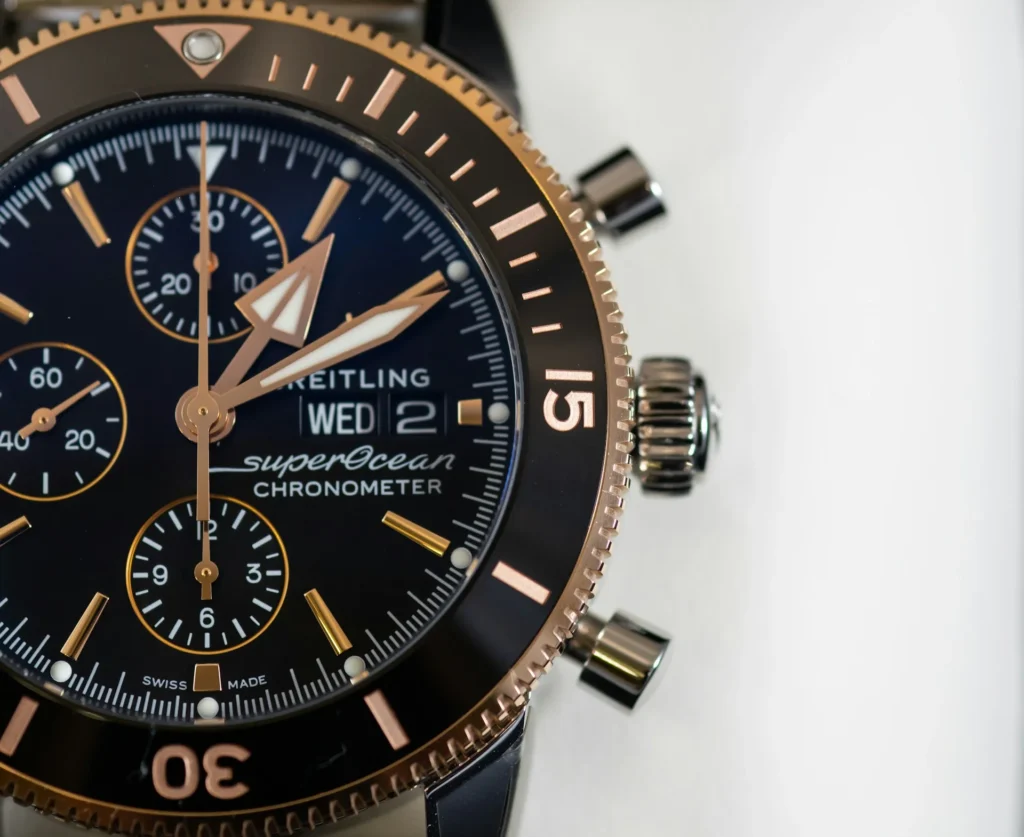
Plongeur hands are designed to be highly legible and durable, making them a popular choice among professional divers and watch enthusiasts. The large size and bold design of Plongeur hands make them easy to read even in murky water, and the luminescent coating ensures they remain visible in complete darkness.
While Plongeur hands are primarily designed for diving watches, they can also be used in other types of sports watches and chronographs.
14. Snowflake Hands
Snowflake hands boast a distinctive design characterized by a prominent central diamond shape, primarily featured on the hour hand. First introduced by Tudor in the 1960s, these hands brought a new design flair to divers’ watches. Making their debut on Tudor’s Submariner dive watches, the bold diamond shape enhances legibility underwater, while the pointed edges add flair to the overall aesthetic.
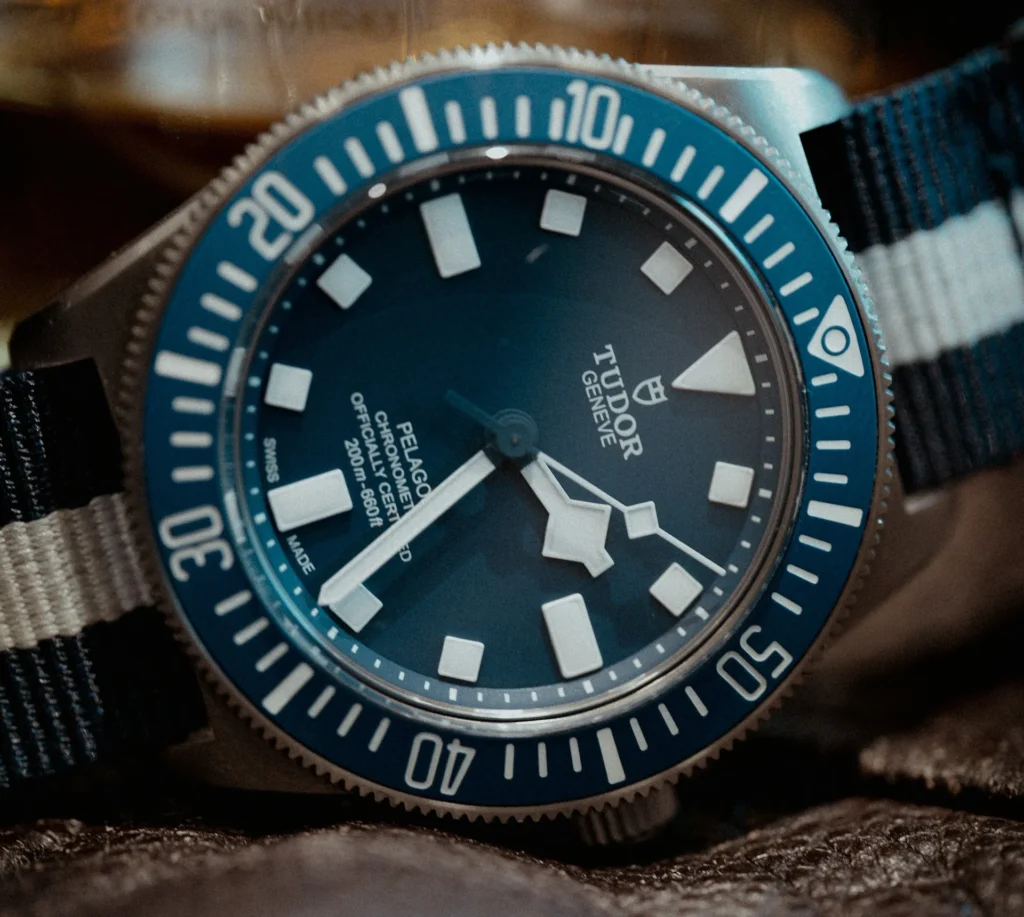
By 1999, Tudor retired the Submariner line along with its famed snowflake hands. But the design made a triumphant comeback in 2012 on the new Black Bay and Pelagos models, resuscitating one of Tudor’s most beloved visual signatures. The Black Bay especially recaptured the old-world diving spirit of vintage Tudor Submariners in a fresh, modern package.
15. Skeleton Hands
Skeleton hands are an open, minimalist style featuring a metal frame and cut-out center rather than being solid. The open middle creates a lightweight, delicate look.
Watch brands like Hublot and Richard Mille use skeleton hands on high-tech chronographs to complement skeletonized dials and exposed movements. The see-through hands enhance the avant-garde mechanical aesthetic. Dress watches utilize finer skeleton hands for a weightless elegance.
Regardless of watch type, skeleton hands reveal a sculptural, architectural expression. Their artful cut-outs reflect the ingenuity of distilling hand design to its open, expressive basics.
16. Sword Hands
Sword hands are long and narrow watch hands that resemble the blade of a sword. They are often used in sport and dive watches, as their bold and angular appearance makes them easy to read in low light conditions.
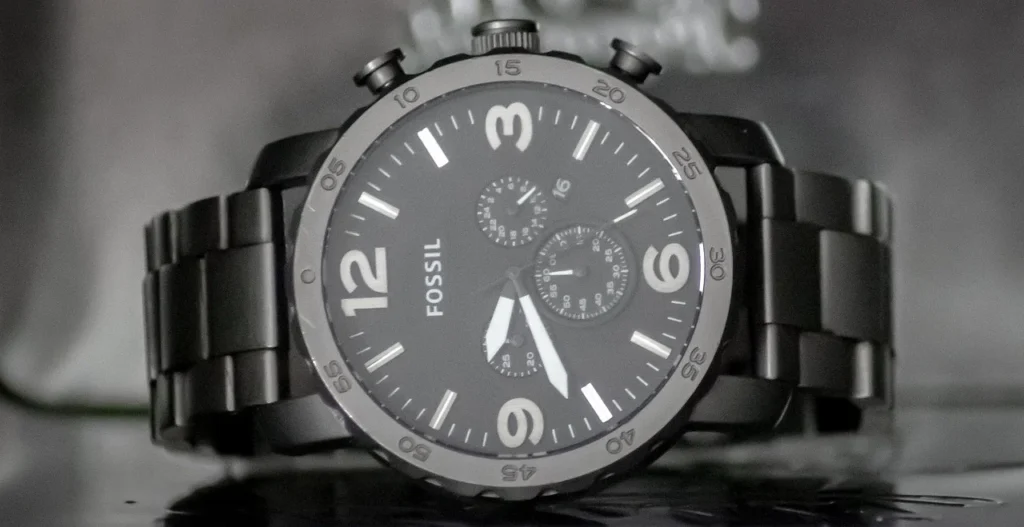
17. Spade Hands
Spade hands are named after their shape, which resembles a playing card spade. They are broad, paddle-shaped watch hands with a pointed tip that makes them easy to read.
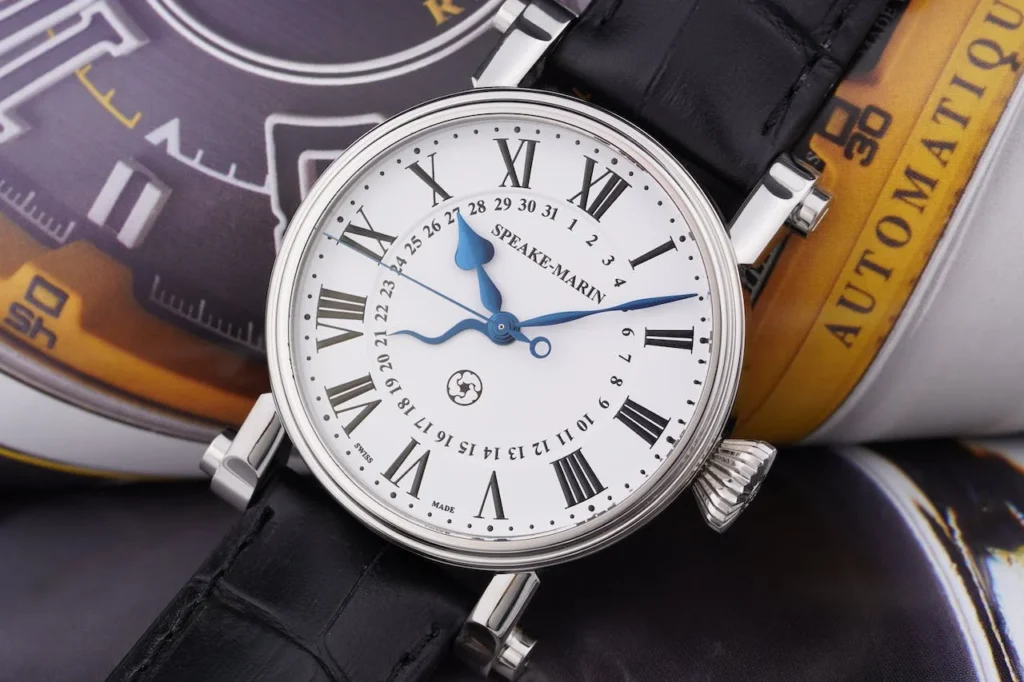
They are often used in dress watches and are paired with minimalist hour markers for a clean appearance. While not as commonly used as other types of watch hands, they add a touch of sophistication to any watch.
18. Syringe Hands
Syringe hands are a unique type of watch hands that are named for their resemblance to a medical syringe. They are typically slender and have a pointed tip that tapers towards the center of the hand. Syringe hands are often used in vintage or retro-inspired watches, as they were a popular design choice in the mid-20th century.
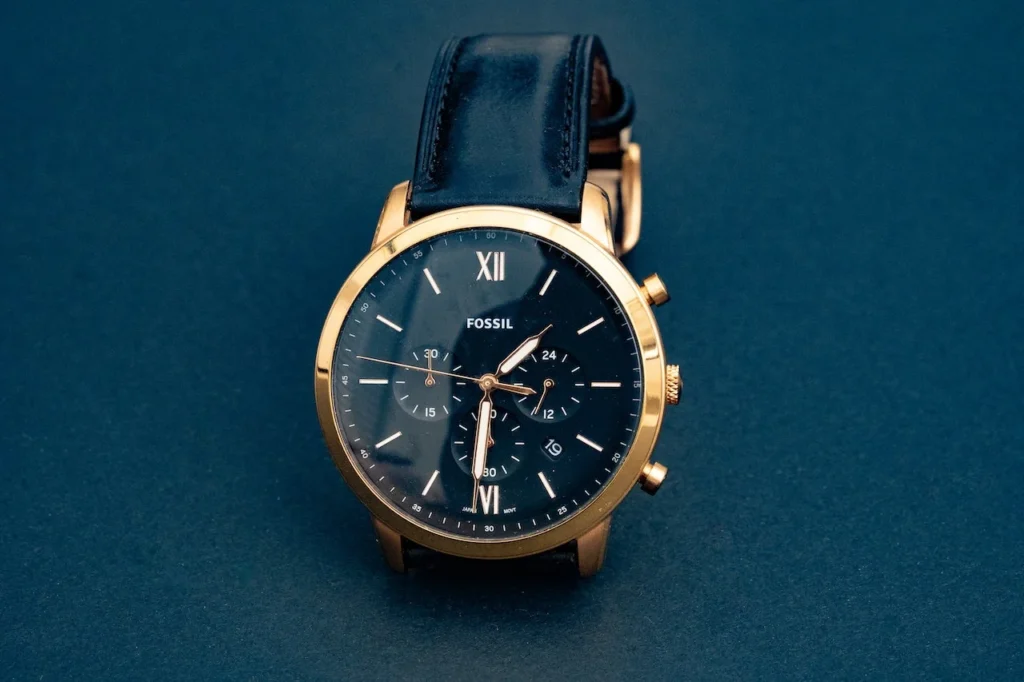
Wrapping Up
The diversity across watch hand designs is truly remarkable. As we’ve seen, hands can convey elegance, ruggedness, utility, and artistry all through their intricate shapes and profiles. Watchmakers utilize hands not just to tell time, but to communicate themes and values associated with their brands. Constellations of hands form in the mind of the design theorist before materializing into miniature mechanisms. For enthusiasts, hands are windows into eras past, glimpses into cultural zeitgeists, and canvases for future possibilities.
By studying the nuances that set each hand shape apart, we better appreciate the creativity and vision behind these functional components. They are delicate symbols that chronicle our pursuits, our aesthetic tastes, and our innovating nature.
FAQs
The main categories are dress watch hands (e.g. Breguet, cathedral), casual/tool watch hands (e.g. Mercedes, snowflake), avant-garde hands (e.g. skeleton, Obelisque), and retro/vintage inspired hands (e.g. pencil, lozenge).
Hand designs reflect the history, values, and aesthetics associated with a brand. For example, Breguet hands represent heritage and craftsmanship, while Mercedes hands convey sportiness and legibility.
Thinner hands with precise tips, strong color contrast against the dial, anti-reflective coatings, and lumed hands all improve legibility. Simple uncluttered dial designs also help legibility.
Hands are stamped from metal sheets, CNC milled into shape, engraved, treated with finishes/coatings, and assembled – requiring significant skill and precision.
Brands like Rolex (Mercedes), Tudor (Snowflake), and Breguet (Breguet hands) all have signature hand designs key to their identity.
Luminescent coatings on hands make them visible in low light. Often used on dive watches for underwater legibility.
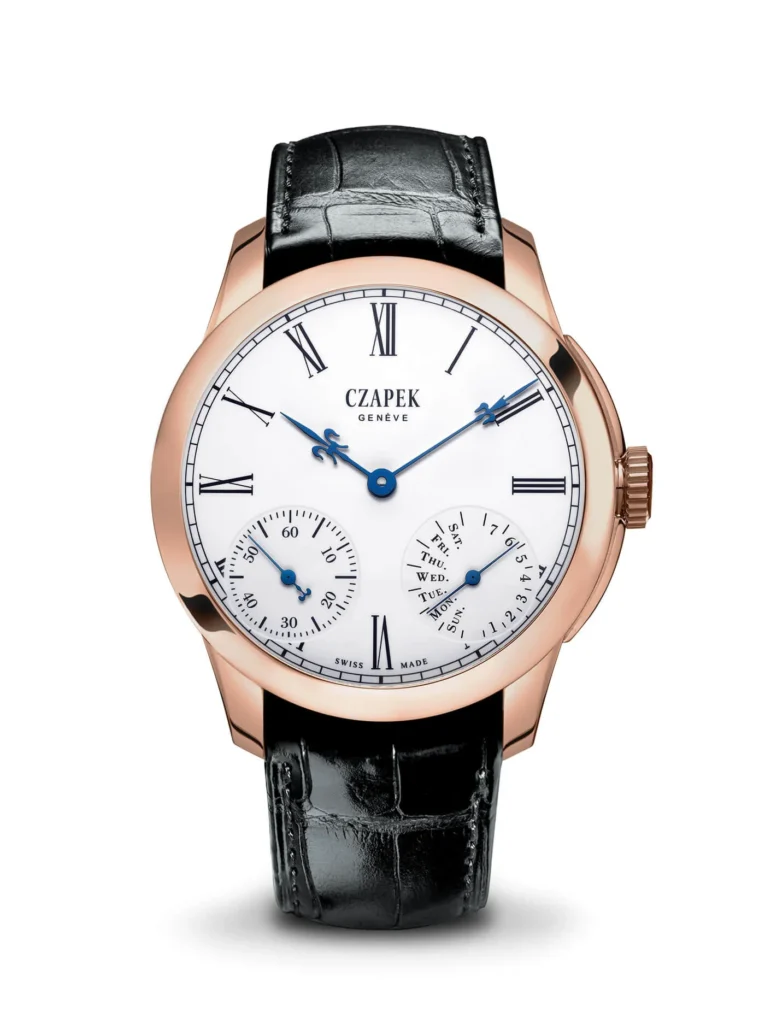
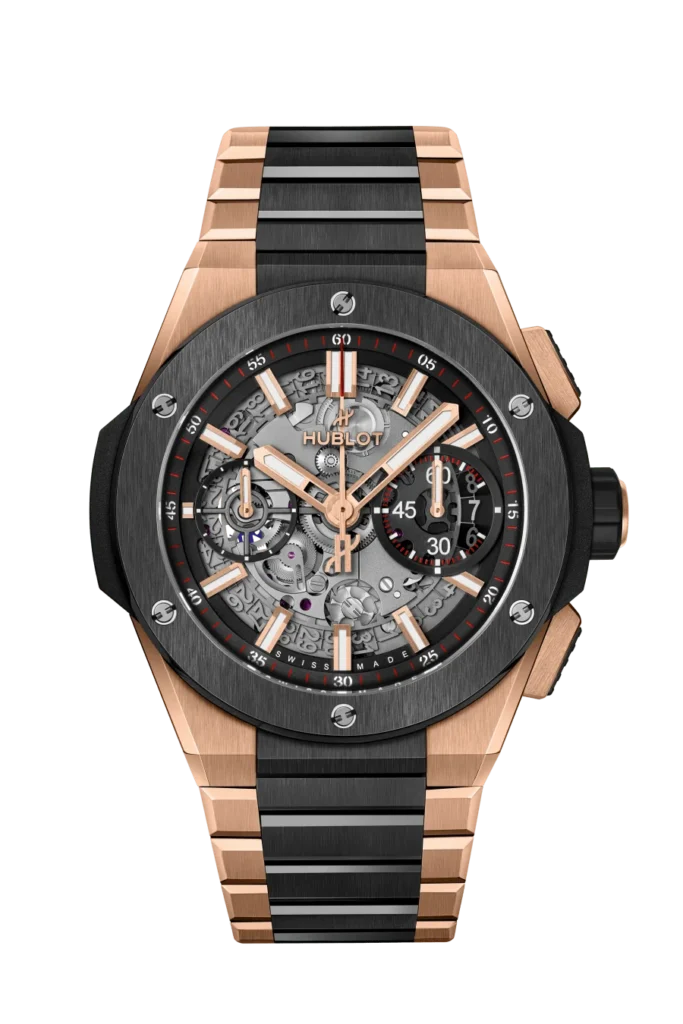
I really enjoyed reading your article on watch hands! In my opinion, the most important factor is how legible the hands are against the watch face. Even the most beautifully styled hands won’t be appealing if you can’t quickly tell the time. Make sure to prioritize clear, high contrast hands that allow for instant readability.
Hi Luis! You make an excellent point – legibility should be the number one priority when it comes to watch hands. Thanks for the insightful feedback!